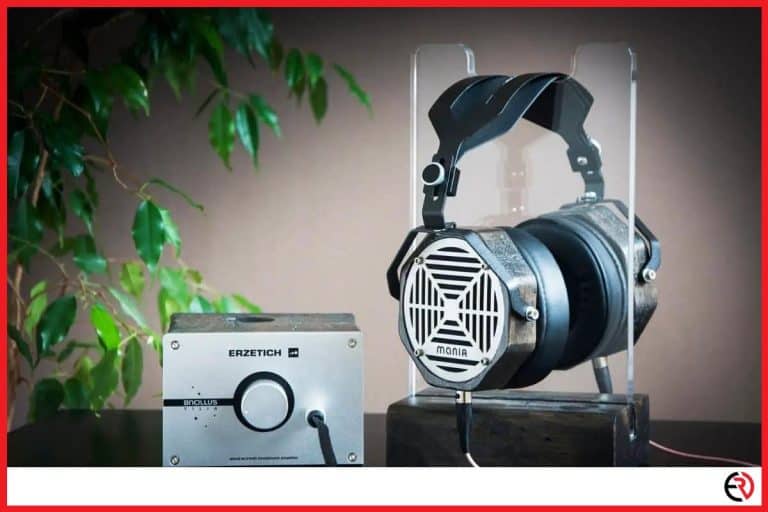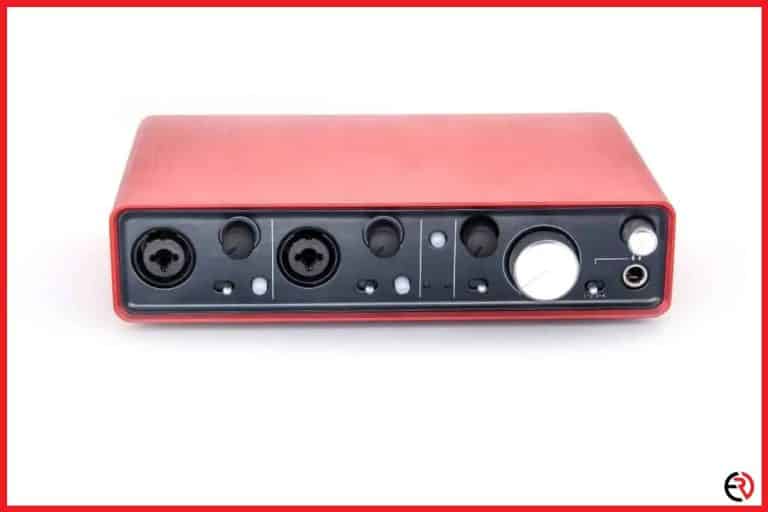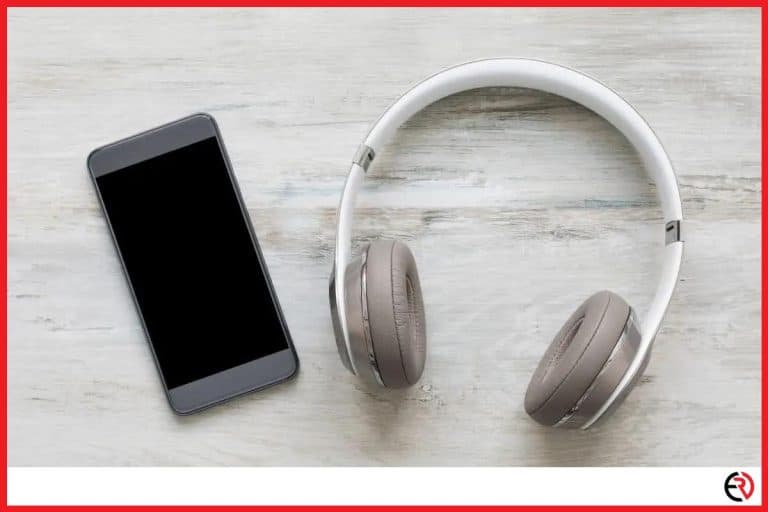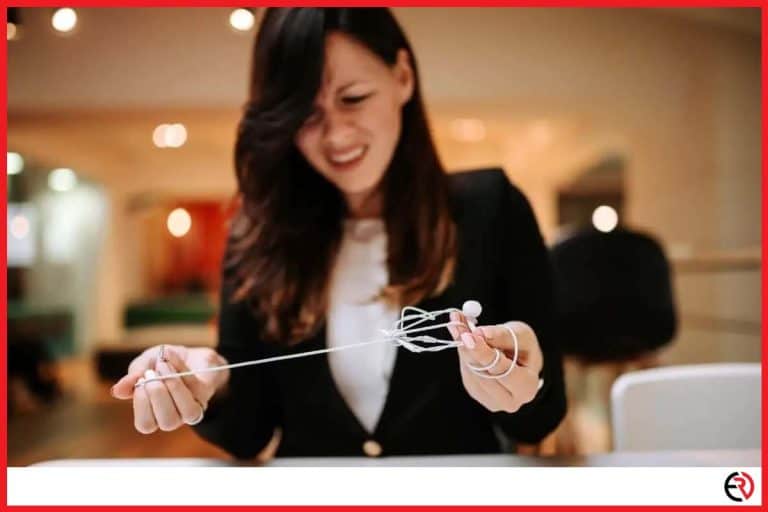How Long Should You Listen To Music With Headphones On?
This post may contain affiliate links which means that, if you choose to make a purchase, I may earn a small commission at no extra cost to you.
Over the past several decades, headphones have become an integral part of most of our lives. For the majority of us, headphones are just something that we bring along with us when we run our errands–like our wallets, phones, or purses. They connect us to our music playlists, podcasts, and phone calls hands free. But, are they really good for us to use as often as we do?
A common question I get ask is how long is it safe to listen to headphones?
The harsh reality is that listening to music with headphones on can indeed damage hearing permanently. The actual length of time this takes to occur is going to vary a lot based on volume levels. In general, it is advised to wear headphones for no longer than 60 minutes a day, at 60% max volume. So, remember that rule as simply ‘60/60’.
Of course, these actual numbers are based on estimates and studies, which we will go into in more detail down below. For now, let’s talk about what actually happens when you use headphones on higher volumes.
Does Listening to Loud Music With headphones Cause Hearing Loss?
Today, it’s estimated that nearly 12.5% of all teenagers have some level of hearing loss due to exposure to high volumes from their headphones. This is a number that is nearly 30% higher than it was just 20 years ago.
According to the Centers for Disease Control, they estimate that nearly 17% of all adults aged 20-69 years old also suffer from hearing loss. That’s nearly 26 million people in the USA alone.
While there may be other determining factors at play–it is believed that the main culprit is indeed the way that teenagers and young adults are listening to their music.
You see, modern headphones can reach volume levels of up to 120dB at max volume. To put that into perspective, that’s about the equivalent of having a car honking its horn into your ears directly. That’s pretty loud.
While most individuals don’t necessarily listen to their headphones on full blast, the potential for damage is still there. Especially considering that even at 60% of 120dB, you are still sitting at a rate of around 65-70dB. This is about the noise of a crowded room filled with talking people.
Prolonged exposure to loud noises has been known to lead to certain adverse side effects. Not the least of which is permanent hearing loss. However, there is one other side effect that many don’t take into consideration. That is, tinnitus.
Can Headphones Cause Tinnitus?

Tinnitus is a condition in which individuals hear a constant ringing in their ears, even if there is no ‘source’ of the noise. This ringing can become deafening in many cases, and cause a lot of emotional and mental distress.
Tinnitus itself is not caused by the use of headphones per se. However, the volume which those headphones are set at can lead to tinnitus. This is, of course, due to the fact that the human ear is not built to withstand constant levels of high volume frequencies pumped into the ear.
While tinnitus is treatable, and in most cases temporary, it is still something that should be avoided whenever possible. This is just another reason why experts recommend that headphone users temper the volume with which they enjoy their media through headphones.
How Loud is TOO Loud? Is There a Safe Volume?
For the most part, headphones cannot cause permanent hearing loss instantly. That means that even if you turn on your headphones at max volume, they won’t ‘blow your ears out’ at that moment. There are certain time frames with which different volumes are safe to listen at. However, it is important to note these for your own listening safety.
The 60/60 rule generally applies to the average set of headphones. That is, headphones that can reach up to 110-120dB. At 60% volume, you will be exposing yourself to between 65-70dB (ish). As we mentioned above, that volume level is about the level of a noisy room–like a restaurant on a Saturday night dinner rush.
That level of volume is generally safe for hearing for a short time. At about 1 hour-1 hour and 15 minutes, you will not be able to experience any serious hearing damage–if any at all. However, that safe time limit for listening drastically reduces the louder you pump up the volume. At maximum volume, you could begin to experience minor damage to your hearing in as little as 5-15 minutes. That damage could become permanent if listened to for more than an hour.
In all actuality, listening to your headphones at about 40-50dB is going to be your safest bet for long term hearing health and safety.
Earbuds vs. Over-Ear Headphones.
All of this above can be applied to headphones in general, for the most part. There is an ongoing debate about whether or not earbuds are inherently more dangerous than over-ear headphones. However, that really boils down to decibel levels like everything else.
By themselves, earbuds are not any more dangerous for your hearing than any other type of headphone. However, there is one risk that needs to be noted. That is, earbuds can increase the direct decibel level in your ear by anywhere from 5-9dB. That’s enough to take the volume levels from safe to dangerous really quickly.
With that in mind, earbuds should be treated more cautiously than over-ear headphones. In general, the volume levels of your headphones–in percentages on the device–should be lower when using earbuds.
However, there are some other risks that can come with prolonged earbud use aside from general hearing loss. This is primarily a problem during overnight use.
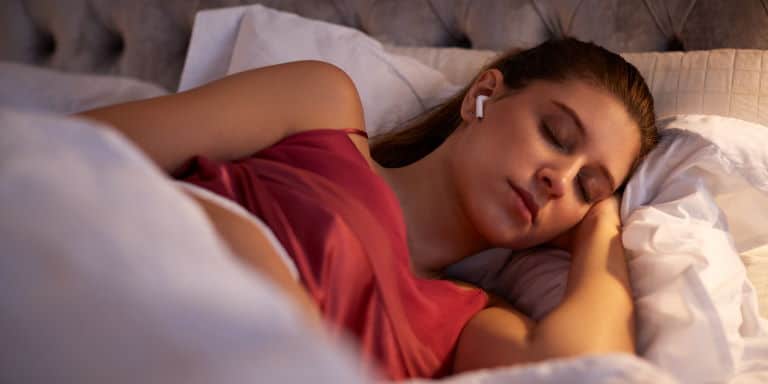
Many people will report that they enjoy using earbuds while they sleep. This is because they help cancel out external noises and they fit more comfortably during sleep than over-ear headphones do. Now, this isn’t a problem so long as the volume levels are within the safe zone–ideally even lower, at around 10-20dB for overnight use. However, there are some risks that can be incurred with overnight use aside from hearing loss. For example:
Excess buildup of earwax due to poor circulation in the ear canal. – Necrosis of the ear tissue caused by constant pressure from the earbuds. – Pain or irritation of the skin in the ear canal due to increased exposure to pressure from the earbuds.
These issues can all stem from wearing earbuds for extended periods of time, such as the 6-8hrs of sleep one will get each night. Earbuds are hard and non-malleable, unlike ear plugs. This can lead to significant issues.
How to Prevent Hearing Loss.
Knowing the dangers of listening to high volumes is only half of the battle. The real issue that should be considered is how we can all work to prevent our ears from taking on heavier ‘loads’ than they are meant to.
The reality is that once the damage is done to hearing, it cannot be repaired naturally. The only way is to use devices for hearing assistants, such as hearing aids. This, of course, is not ideal for most people. That means that the best way to deal with hearing loss is to work to prevent it altogether.
However, talking in decibel levels is generally pretty vague for most of us. I mean, come on, how many of us have any idea what decibel level our headphones are set on at any given time? In this regard, moderation is always key. Following the 60/60 rule is a great start. When adjusting the volume on your headset, always try to keep it at around 50-60% of what the maximum level the device will allow.
On top of keeping your headphones set to lower volumes, consider using headphones less. Try to limit your headphone use to only times when they are needed. For example at the gym, on the bus/train, or during walks or runs. This will cut down on the time you are actually exposing your ears to these volumes in general.
During other circumstances, while at home for instance, it’s best to listen to your media through the speaker of the device or an external speaker. These small steps will go a long way towards cutting down on the damage that could be irreparable.
Final Thoughts
Hearing loss is a serious threat to all of us in this modern media driven society. Headphones are so prevalent in our lives, that many of us simply don’t think about it anymore. However, as hearing loss numbers rise in the population, it becomes increasingly apparent that something needs to be done on our part.
Hearing is one of the most important parts of our lives–something that many of us who are not hearing impaired take for granted. Try to protect your ears as best as possible, and you’ll thank yourself down the road.


